Wingnut Wings in 1/32 scale
Yes! Another LVG
by Jerry Creager
|
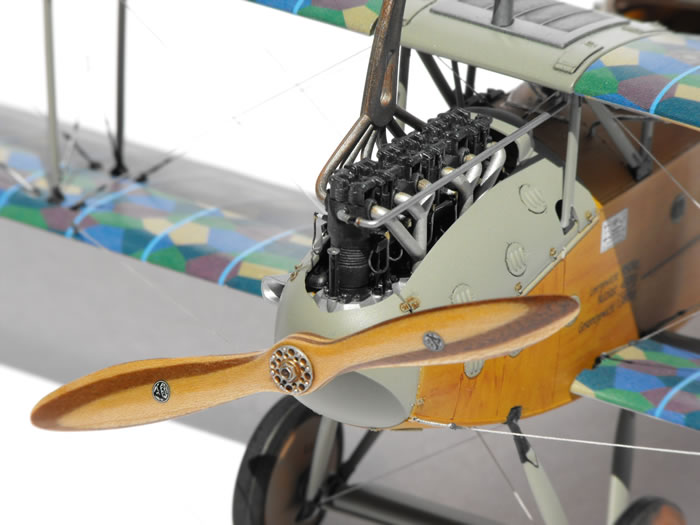
|
LVG |

HyperScale is proudly supported by Squadron
Somebody recently asked me if all of the Wingnut Wings hype was really true or was it just “hype”. My answer was an affirmative “it’s More than true”.
I have built a lot of WW I models going back to the early Eduard kits to the most recent Roden and Eduard offerings. I can say without a doubt that this was one of the most enjoyable builds in a long time. The level of detail and engineering is outstanding. Though not perfect, and what kit is, the fit of the overall kit is superb.
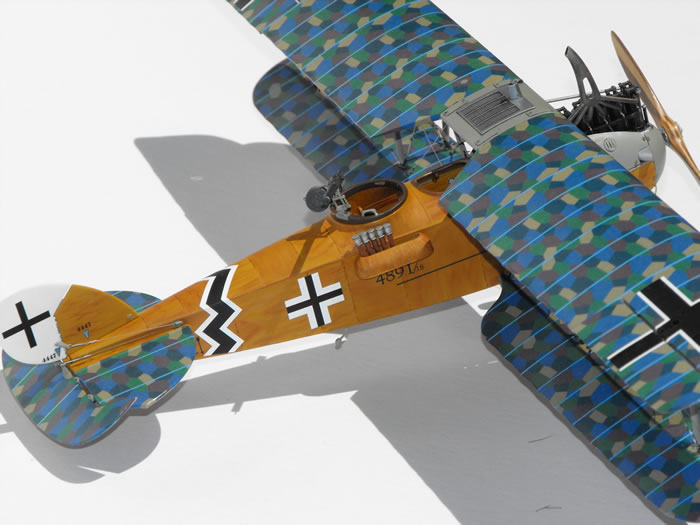
I haven’t built any of the other Wingnut models, so I don’t know if they are as good as the LVG but if the LVG is an example, then I am sure they will be just as much fun.
Cockpit
My model was built almost exactly step by step according to the instruction book with a few minor deviations. I chose to add control cables to the cockpit so I left one of the fuselage sides off until the cockpit sub-assembly was installed. This I did so the control cables passing to the rear of the fuselage could be tightened. If you plan to install control cables make sure you run them behind the lower section of parts A61 and A62 that are in the gunners compartment as the rudder and elevator cables were not visible in this section.
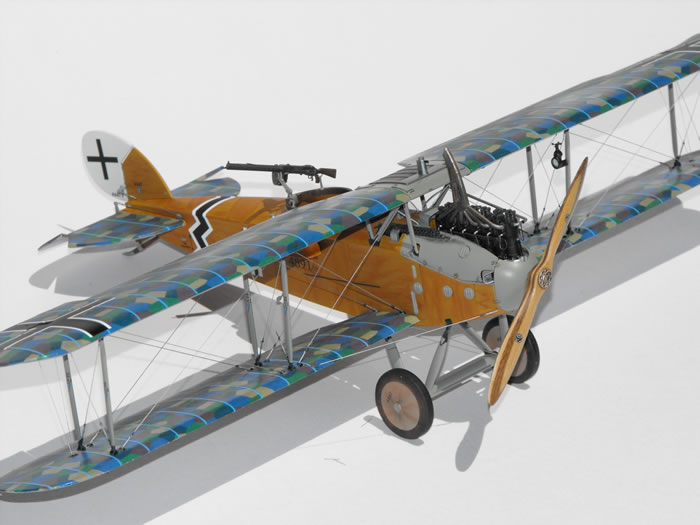
I didn’t realize this until after my Windsock Datafile for the LVG had arrived and by then everything had been closed it up. Had I not misread the rigging diagram I would have installed the cables correctly. However, I’m happy to report that the surgery was successful. Note: Make sure that the cockpit sub-assembly fits tight to the fuselage bottom (part B12) because if it doesn’t the forward lower wing mount will not pass through the opening in the fuselage and into the receiving channel on part A34 without having to do some minor surgery.
Engine
The kit comes with a choice of cylinder heads, with or without molded push rods. I opted to add the push rods which I made of steel wire. I added the ignition harness and wiring as these are visible and adds a realistic touch.
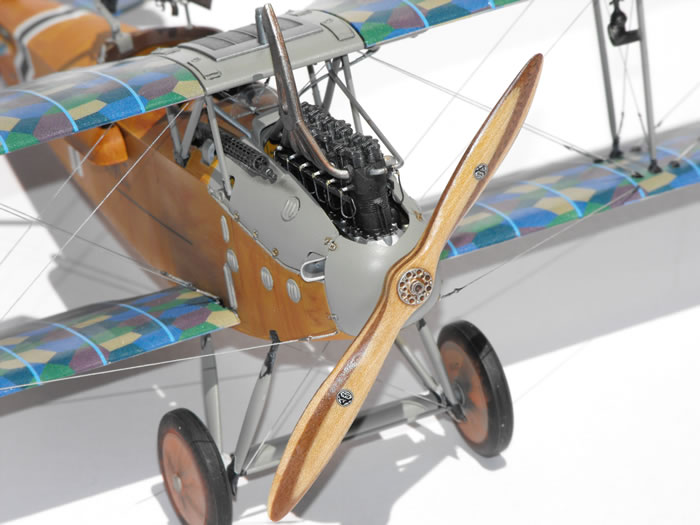
Since I was closing the engine compartment I did not add any other detail that would not be seen.
Finishing
I chose to not install the cabane struts until after the fuselage was completely enclosed and painted and the engine, cowling, and machine gun were installed. I also installed pre rigged turnbuckles that mount between the bottom of the upper center wing panel, parts A38 and A39, and fuselage deck just aft the engine. Note: Make sure that bulkhead at the front of the fuselage, part A48, is completely flush with the fuselage sides otherwise the nose cowling part A18 will not fit flush causing a slight gap. Mine was due to sloppy workmanship and I had to “fiddle” around to get the nose cowl to fit right. Like I said, the engineering tolerances are so precise that proper alignment is critical.
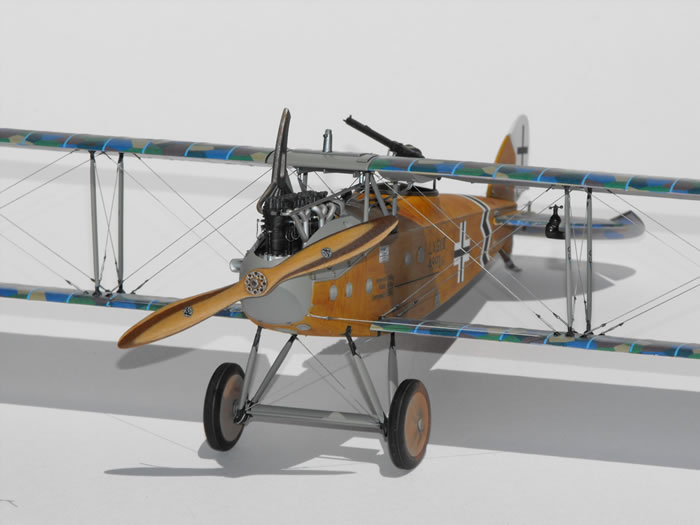
After the fuselage, engine and cowling were complete I added the tailplane assembly. The way the kit is engineered the tailplane self-aligns and is dead on.
The lower wing was mounted first then I added the wing struts. At this point I did not glue them in place until the upper wing was set and the alignment checked. Then I added a tiny drop of superglue at each strut location on both wings. Again, I have to say that the engineering is so precise that there were zero alignment problems.
The remaining assembly followed the instructions step by step.
Painting, Markings and Rigging |
I have built quite a few models with wood finishes and have always used oils.
I start by applying an undercoat of light tan acrylic paint to all of the surfaces that will be wood. I use acrylics because the oils do not cut through the acrylics when working oils onto the surface with repeated brush strokes. It is these brush strokes that will create the wood grain affect. I use a 1/4” or 3/8” shader brush which lays down a pretty even layer of paint. Next I use a 1/4” rake brush over the area I have laid down the base wood color. The rake brush scrapes away some of the base coat to let the lighter tan color show through creating a pattern that resembles wood grain. After this is dry I go back over the area with the rake brush adding just the slightest amount of very thin darker color (burnt Sienna) to give the affect of a darker “grain”. I am careful not to overdo this because if you get it too heavy it will appear to darken the entire wood area.
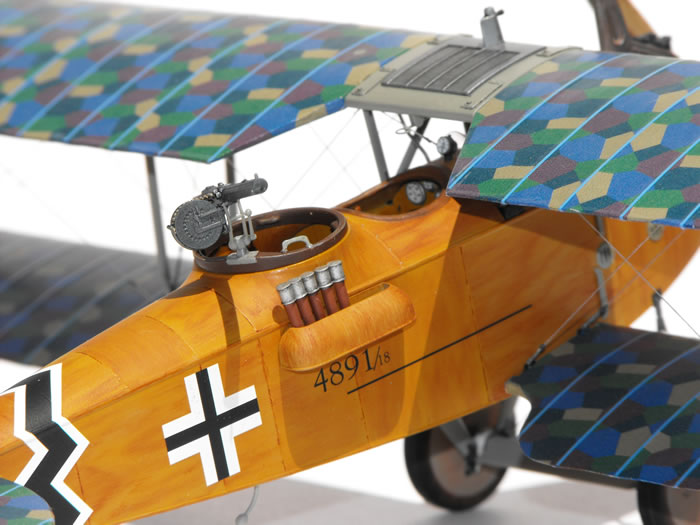
The two primary colors I use are Yellow Ochre and Burnt Sienna. I find the Burnt Umber to be too dark for my preferences. Depending on the ratio of Burnt Sienna to the Yellow Ochre the darkness of the wood can be varied. I normally start with the Yellow Ochre and add the Burnt Sienna in very small amounts until I get the base color of wood I am looking for. On the side of my mixing cup a have a small to moderate amount of Liquin Original by Winsor and Newton. This is a medium that does not affect the color but increases the drying time of the oils considerably, usually the next day. Without the Liquin the oils may take several days to dry.
One thing about the Liquin is that it will thin the oils, so be careful not to add too much. With a thin mixture it is more difficult obtain the wood grain affect. Another technique is to let the base layer of paint start to set before going over it with the rake brush. It may take a little more effort but the results can be worth it.
Once the oils are dry I immediately apply a good coat of Future. This helps while handling the model because the oil although dry to the touch is still soft and not fully hardened. It is important to know that if you use mineral spirits or a thinner based wash directly over the oils it will remove the paint when you start taking off the wash. Even with the Future use caution in the event you missed a spot. I haven’t tried acrylic washes yet but I would feel more comfortable knowing that the base color was sealed.
Keep in mind that all of these fuselage colors can be varied by adding more or less Burnt Sienna to the Yellow Ochre. Side note: By adding a touch of red you can get a good looking mahogany finish.
Decaling
The decals provided on the kit are excellent and I had no trouble applying the lozenge decals to the wings. I chose to prime and then Future the areas that would get the lozenge decals, however, a coat of good gloss paint may have worked just as well. I did not have to use any setting solution during the main application, although, I did go back over the trailing edges to secure some of the rib tape decals with some Microsol.
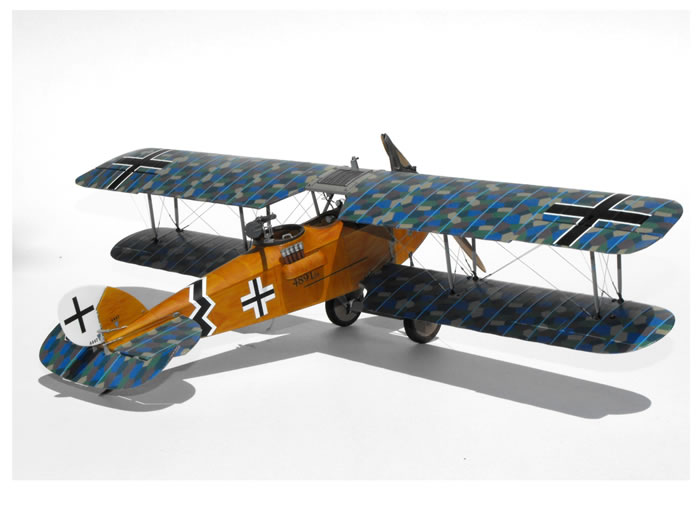
Some of the trailing edge decals loosened and chipped away during handling but this was easily corrected by a little touch up painting. My only criticism is I wish Wingnuts had provided another strip of lozenge decal so they could be used for rib tapes as another option to the solid color tapes provided in the kit.
Rigging
The rigging took a little pre planning but worked out almost effortless. I installed the turnbuckles on the wings and struts before any of them were attached to the fuselage. The kit has the rigging locations pre drilled. I made them a little deeper with a #80 drill so the attachment end of the turnbuckle would fit in the hole. I pre tied the rigging line to the turnbuckle before I attached the turnbuckle to the wings. On the underside of the top wing I used an eye made the same way as the turnbuckle except cut off leaving about 1/8 inch to go into the mounting hole. The control cables were treated the same. Included is a diagram of how I made the turnbuckles which is really quite simple and goes faster than you might think. The rigging wire is made from a #65 silver-gray thread. I can’t give you the manufacturer because it’s in Chinese.
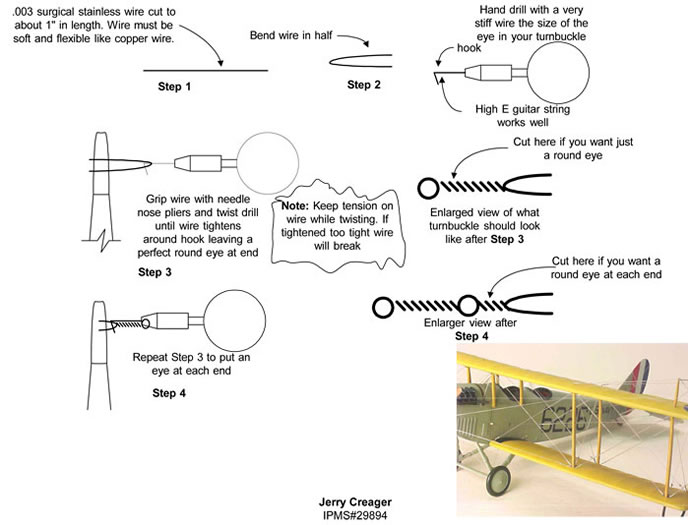
As a final touch I decided to make a wooden prop laminated from walnut and spruce. The kit comes with two propellers so I sacrificed one to cut the prop boss off and added it to the wooden prop.
Images and Text Copyright ©
2009 by Jerry Creager
Page Created 19 August, 2009
Last Updated
19 August, 2009
Back to
HyperScale Main Page

|
Home
| What's New | Features | Gallery | Reviews | Reference | Resource Guides | Forum |